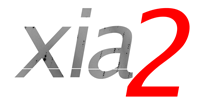As per previous post the command syntax change branch has now been merged, if you get your xia2 from git your next git pull will be a big one and you may find e.g. -resolution / -atom etc don't work any more... The functionality is still there however, you just need to use atom=Se (say) or anomalous=true, d_min=1.6... full documentation will follow of the changes.
The pipeline options -3d. etc remain however are now deprecated but still work, you will get a note saying "please use pipeline=3d"
Please if you find any bugs as a side-effect of this contact xia2.support@gmail.com or add an issue at
https://github.com/xia2/xia2/issues
Friday 8 July 2016
Monday 4 July 2016
Please be aware: changing command syntax
At the moment we use a mix of command syntax, some using Phil (i.e. unit_cell=a,b,c,al,be,ga) and some using legacy arguments: we plan to completely remove the latter in favour of the former, see
https://github.com/xia2/xia2/issues/42
with the intention that using xia2 in an automated environment is more straightforward and making it much simpler to automatically maintain much more complete documentation of all the options.
This will be a feature of the 1.3 release of DIALS.
https://github.com/xia2/xia2/issues/42
with the intention that using xia2 in an automated environment is more straightforward and making it much simpler to automatically maintain much more complete documentation of all the options.
This will be a feature of the 1.3 release of DIALS.
Thursday 5 May 2016
Eiger HDF5 data, with xia2
A common question over the past couple of months is when xia2 will work with Eiger HDF5 data natively. Well, in the dials 1.2 release now available from dials.github.io it now does: your mileage may however vary, there is a certain amount of variation in the file formats still, but I think we have tested with all of the machines running out there in the wild.
This is the result of a substantial amount of hard work from the dials and xia2 development teams, thank you to you all.
This is the result of a substantial amount of hard work from the dials and xia2 development teams, thank you to you all.
Friday 18 March 2016
xia2 -dials spotfinding output
The latest xia2/dials nightly builds contain new output for the spotfinding step of xia2 -dials:
-------------------- Spotfinding SWEEP1 --------------------
102684 spots found on 1800 images (max 1854 / bin)
***** ** * * * ****** * *
************************************************************
************************************************************
************************************************************
************************************************************
************************************************************
************************************************************
************************************************************
************************************************************
************************************************************
1 image 1800
These show the number of strong spots found on images during the spot finding and may provide insight into data processing problems due e.g. to sample misalignment. This is rather a nice example, you may see rather more variation than this with more typical data, but if you see a clear minimum anywhere in the set (i.e. results tend to 0) do not be surprised if the processing fails.
For Diamond Light Source users, this is very closely related to the per-image-analysis performed during data collection and should provide a similar level of insight. It is no accident that similar output is now visible in the summary from DIALS spot finding:
Histogram of per-image spot count for imageset 0:
102684 spots found on 1800 images (max 1854 / bin)
***** ** * * * ****** * *
************************************************************
************************************************************
************************************************************
************************************************************
************************************************************
************************************************************
************************************************************
************************************************************
************************************************************
1 image 1800
Processing compressed data
Even with modern machines today, X-ray diffraction data can still be big. However, pixel array data also compress well with e.g. gzip - say 20:1 on CBF files from a Pilatus detector. If only they could be processed compressed...
... well they can be. Actually xia2 can run just fine with compressed images:
xia2 -atom Zn image=/Volumes/DATA/data/thermc_1_0001.cbf.gz:1:1800
and works with XDS as well. In the case of this thermolysin data, which were kept on an external USB3 drive, the whole xia2 job was about 20% faster using the compressed data rather than the raw. Worth considering as it also saved about 95% of the storage space as well.
The effects for even bigger data sets could be more substantial, as the 1800 images were able to fit in the cache. If this was not the case the time saving would be greater as the compressed data could be cached but the raw no...
Worth thinking next time you complain about the amount of storage X-ray data takes up.
YMMV, not tested on non-CBF images, some software may not support this, ...
Subscribe to:
Posts (Atom)
